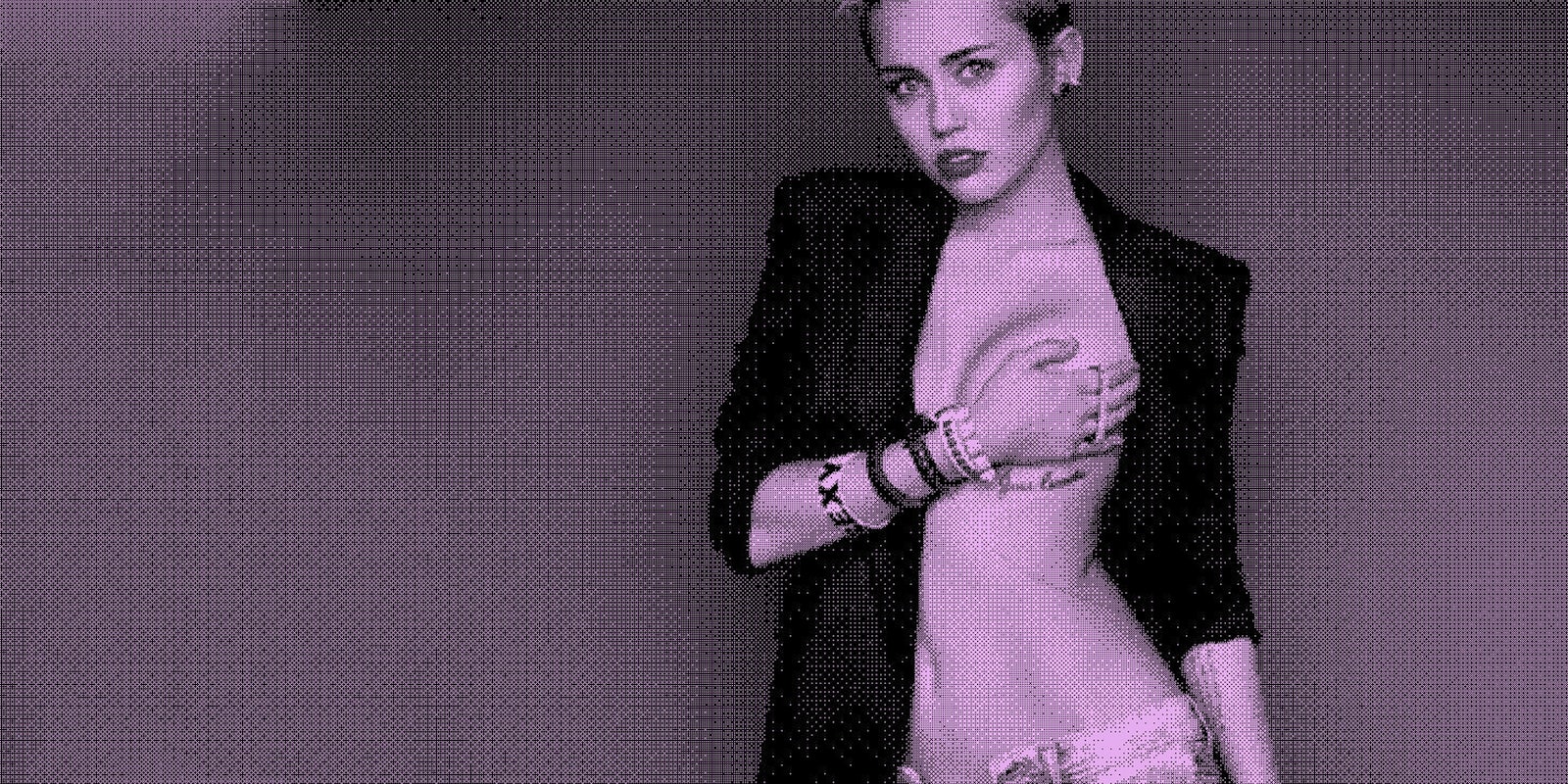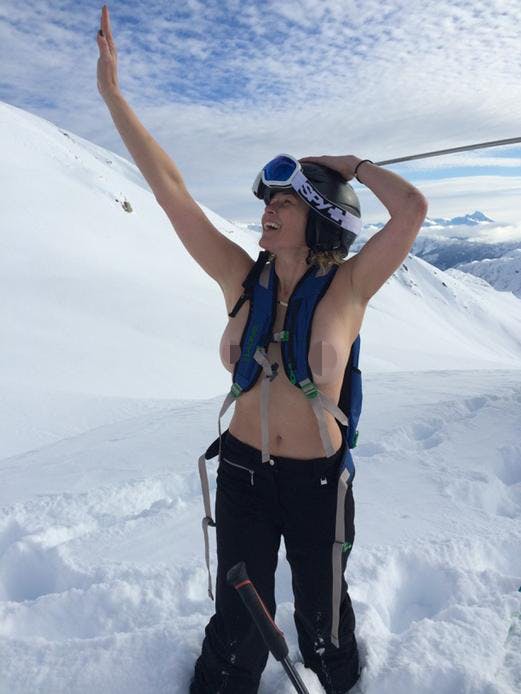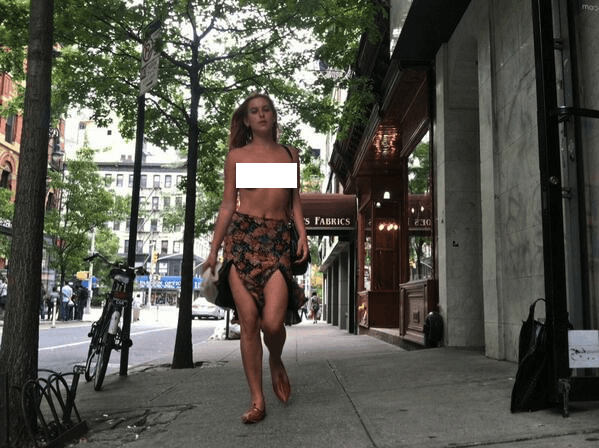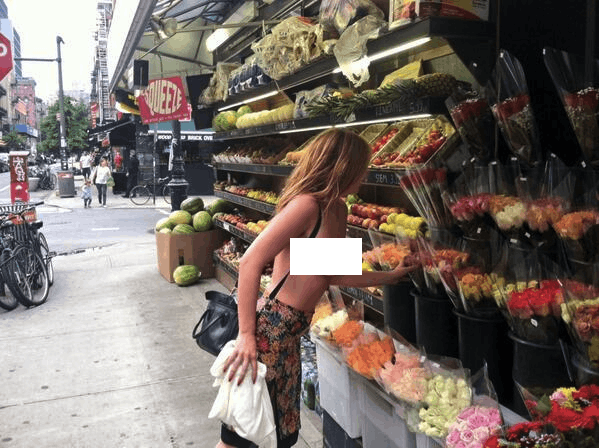Earlier this week, Miley Cyrus and Chelsea Handler made headlines for posting topless photos of themselves on Instagram with the hashtag #FreeTheNipple, as part of the social media campaign protesting against Instagram’s anti-nudity policy:
When I saw the topless photos of Handler and Cyrus, I had two thoughts. The first was “Damn, ladies. If my tits looked like that, I’d walk around topless every day.” And the second: “What does it say about me, and #FreeTheNipple in general, that my first thought was how awesome Chelsea Handler and Miley Cyrus’s boobs were?”
Of course, it’s neither Handler nor Cyrus’s fault that they happen to be blessed with structurally perfect mammary glands. But the photos got me thinking about #FreeTheNipple and the women I’ve seen publicly supporting it so far, such as Rihanna, Cara DeLevingne, and Scout Willis, who famously strolled around Manhattan wearing nothing but a sarong and a smile.
Is it a coincidence that the women who are the public faces of #FreeTheNipple are attractive, privileged, and (with the exception of Rihanna) white? I don’t think so. As it stands now, #FreeTheNipple is a movement that too often advocates for freeing certain types of nipples: i.e., those that straight dudes (and semi-straight ladies like myself) want to see. And if #FreeTheNipple wants to become more than just a battle for hot white ladies’ right to show their nips on social media, that’s going to have to change.
The #FreeTheNipple movement started gaining ground back in 2012, when director Lina Esco was inspired to shoot a feature film called Free The Nipple after learning that women were being arrested for public toplessness in New York City. (Women are technically allowed to appear topless in public in New York, but that hasn’t stopped police from arresting them nonetheless.)
After shooting the film through Hurricane Sandy in 2012, Esco released Free the Nipple in select theaters earlier this year. A cadre of young Hollywood women, from Scout Willis to Rihanna to Cyrus (who starred with Esco in the 2010 film LOL), expressed their support for the film and the #FreeTheNipple campaign on Twitter and Instagram. In 2013, Cyrus popularized the hashtag by tweeting a topless Christmas selfie, and in May of this year, Willis promoted the film by taking a very public topless stroll through the streets of Manhattan.
Despite the hubbub surrounding Free The Nipple and the social media campaign, Esco wants to make it very clear that #FreeTheNipple isn’t about the right to flaunt one’s breasts in public. Rather, she says, the right for female toplessness is symbolic of the greater struggle for gender equality, and the fight against female oppression as a whole.
“People have been saying, ‘There are bigger issues for women’s rights than going topless for equality,’” Esco told me when I spoke to her about her film back in November. “Well, you know what? If you’re talking about equality, women have been oppressed for centuries. It’s like Rosa Parks said: I wanna sit in the front of the bus with these people. I want the same rights as these people.”
As a die-hard feminist and opponent of censorship, particularly when it applies to the nude female body or expression of female sexuality, I’m inclined to agree with Esco, up to a point. If women are entitled to the same rights as men are, then it follows that we should be allowed to wear as little or as much clothing as they do, without fearing arrest or censure or, worse, sexual assault.
That said, I’m skeptical of the general idea that Freeing the Nipple is tantamount to delivering the death blow to the patriarchy, particularly when I look at women like Willis, Cyrus, and Handler, who have normative, conventionally attractive bodies. (Although Esco told me she made an effort to showcase a diverse range of bodies in her film, casting women of color and mastectomy survivors to appear in the final climactic scene, the parade of slim, perky-titted, lily-white hipster bodies in the Free The Nipple trailer indicates otherwise.)
When I see Miley Cyrus pouting seductively in a sepia-tinted topless Instagram photo, or Chelsea Handler posing like a perky-titted snow maiden against the backdrop of the Swiss Alps, it feels a bit like a humblebrag in the #nomakeup selfie tradition, a way of saying, “This is what I look like with no makeup or Photoshop, in the body God gave me—and OMG, don’t my boobies look so fucking awesome?”
These are not women who are going to be yelled at for appearing half-naked in public. If your average red-blooded hetero man saw Scout Willis walking topless down the street, he wouldn’t complain. But would he complain if he saw, say, a mastectomy survivor, a breastfeeding mother, or any other woman who fell into the category of “ladies I don’t want to stick my penis in?” Tough to say.
Unlike your average American woman, the women representing #FreeTheNipple aren’t going to suffer professionally as a result of appearing naked in public. For the sake of comparison, if I posted a photo of myself topless on Instagram, it would significantly reduce my future employment opportunities. My relationship with my family and my significant other would likely suffer, and I probably wouldn’t be able to work with children or teenagers for the rest of my life. But Miley Cyrus can post a Terry Richardson photo of her labia and go on the Today show.
Should women be punished for expressing their sexuality and showing off their bodies? Absolutely not. But is it radically unfair that one woman with the benefit of wealth and celebrity can avoid censure for doing so, while another woman can’t? I don’t think that’s up for debate.
The failure of #FreeTheNipple to adequately reflect the diverse range of female bodies is particularly depressing, given that the aforementioned mastectomy survivors and breastfeeding moms are the very women who spawned the movement and are intended to be its direct beneficiaries. When Facebook started taking down moms’ breastfeeding photos, they fought back, inspiring the social media website to change its policy to allow breastfeeding photos earlier this year. The same thing happened when Facebook started removing cancer survivors’ triumphant post-mastectomy photos, on the grounds that they fell under the guidelines for “offensive” content.
Of course, there is nothing offensive whatsoever about looking in the face of death and coming out laughing at your battle scars, and there is nothing offensive whatsoever about a new mother giving life to her child, and there is nothing offensive whatsoever about a female breast or nipple in itself. But what is offensive is fighting a war in the name of all women and all women’s bodies, and saying that only some women can reap the spoils of it. What is offensive is saying that “women’s bodies shouldn’t be censored,” when that actually means “women’s bodies shouldn’t be censored, if other men want to have sex with them.”
There is nothing offensive about #FreeingTheNipple, provided all sorts of #nipples and all sorts of female bodies can be #free. But until that’s the case, I’m not going to pat celebrities on the back for showing off what God (or the plastic surgeon in Sherman Oaks) gave them.
Photo via HotGossipItalia/Flickr (CC BY 2.0) | Remix by Fernando Alfonso III






